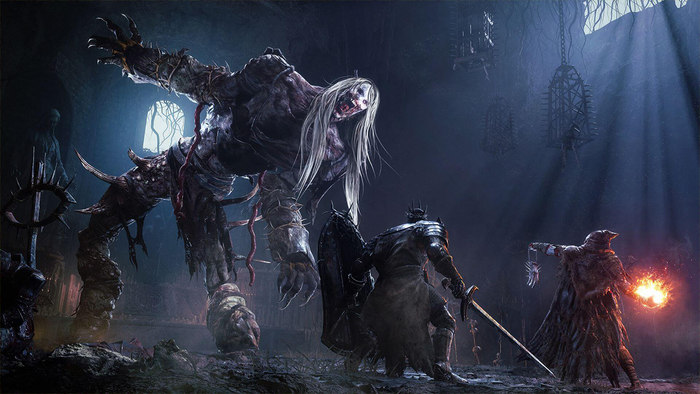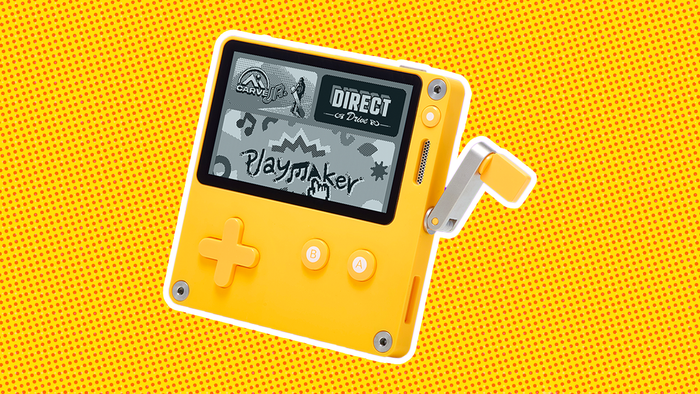
Featured Blog | This community-written post highlights the best of what the game industry has to offer. Read more like it on the Game Developer Blogs.
Having trained for six years to become an architect, in 2010 Nicholas Lister left the field to become an independent game developer. He tells how he came from where he was then to where he is now and the lessons from architecture he has brought with him

My name is Nicholas Lister and I am an independent game developer, but my background isn't in game development at all. Before taking it up I had trained for six years to become an architect. Now that I am running up to the launch of Imp Paired, my first fully-fledged game, it seems like an appropriate moment to look back on my journey from architecture to indie developer and share the story of how I got here and the lessons from architecture I have brought along with me.
Screenshots From Imp Paired
Imp PairedWhen I decided to turn away from my architectural education, I was tantalisingly close to qualifying. I had completed a three year degree at the University of Westminster, where was given a 1st and finished highest in my year, completed a year of practice and professional experience at a moderately large commercial architecture company in London and had completed the two year diploma course at the Architectural Association (AA). All that remained was for me to get another year of experience in practice and pass my professional exams and I would be an architect.
By the time I finished at the AA, however, I wasn't so sure that I wanted to be an architect, I certainly wasn't sure I was all that keen on practicing architecture and I had started to realise how ambivalent I was about the architectural profession. To this day I love architecture as an academic field, but in practice I think it has a lot of problems; those two years at the AA had cast a lot of them into sharper contrast for me.
So I had come out of architecture school feeling kind of lost. That was certainly accentuated by the fact I was suffering from undiagnosed depression and had been doing so while going through the merciless experience of architectural education. I was feeling exhausted and lost and decided to take some time out to think about what I wanted to do next.
In the end, thankfully, I have been able to overcome the worst of that depression. The process of creating Imp Paired has gone hand-in-hand with dealing with it. Imp Paired is all about work and coming to terms with a working life through play. That has been a big theme of my overcoming depression too and I think both have emerged quite naturally as a result of each other. This story about mental illness is a bit of a digression and is really for another time, but I should say that continuing to see a good therapist once a week over the last three years has, in a very literal way, been a life saver.
That time out after architecture school turned into a sort of drifting and eventually a search for a new direction and a new career path. I tried my hand all kinds of things, from graphic design and web design through modelling and writing, but nothing really took hold.
It wasn't until a day of no other particular note, when a friend of mine started talking, just generally, about videogames that something suddenly clicked somewhere in the back of my brain. I realised I had some programming skills, I had designed interactive environments, I could make graphics, I had a computer, I was lucky to have inherited enough money to live on for a while and I realised that making videogames didn't mean having a publisher or having to make something huge any more. I could make videogames.
At that time, the arrival of distribution platforms like Apple's app store had meant that it was feasible to make something small yourself, to get it out there in front of a lot of people and maybe even make some money out of it. Sure, the long game was bigger and more complicated, but that essential freedom to produce and to explore making games without the need for clients or bosses, and to do so professionally, was a seductive indie dream and I set about pursuing it.
I just decided that I was going to make a go of it and unlike anything else I had tried it stuck. I found a passion for it and found it fulfilling in a way that nothing else I had tried had been. It provided the opportunity to make things that were significant and meaningful, to explore a relatively nascent and incredibly vibrant medium. It was what I had been looking for.
I was incredibly naive, of course. Starting to make videogames is massively more difficult than I had imagined it would be, but if I hadn't been that naive I don't think I'd have done it at all. In the end it really helped. I can't claim that I successfully navigated my way from that point to this point on my own. There have been a lot of wrong turnings along the way and I've had a huge amount of help from some people who were very generous with their time. Just by sheer luck of a mutual connection I met Paul Taylor from Mode 7 and we kind of hit it off. He's a smart guy and incredibly level headed. He and Aj Grand-Scruton from Dlala have sporadically been kind of like mentors to me. It's hard to think where I might be without their support.
Architecture
To put some of what I have just said and some of what I'm about to say into some context, I want to first tell you a bit about my architectural interests.
Predominantly, my interests as an architect were less in designing buildings than creating building systems. Sometimes that meant parametric design, where I was writing some basic software that allowed the computer to determine the material form of a building (or more usually a larger urban development) based on a system of my design and in reference to the specifics of a site. The picture below, for example, shows a housing development I designed for Monaco in my final year at the Architectural Association. The twisting forms of the structures are determined by how much heat each apartment is allowed to harvest from the sun on this south-facing rock face. Within the development there's a kind of economy of climate control that's being fed by this collection and determines the relation of apartments to each other.
 Housing Development, Monaco
Housing Development, MonacoIn other instances it meant designing kinetic and interactive structures, like the community center for a car park in Acton, West London (below). All these little pavilions are able to be manipulated in some way: changing lighting, extending awnings, changing seating rakes and so on. Whenever they are put in a certain state they remember what the state was and when (in relation to other pavilions being put into states) they were put in into it. The pavilions then try to put themselves in the correct states at the correct times so the whole thing becomes this giant, slightly chaotic, clock. It also means that when users change the pavilions' states it sets off a chain reaction across this whole car park of structures. It was designed as a “24-hour living toy”, a phrase coined by a fascinating architect called Cedric Price, whose work has been deeply influential to me and I think has a lot to offer many discussions around the intersection of games and architecture.

 Community Centre, West London
Community Centre, West LondonLessons From Architecture
There are a few things I learnt from studying architecture that I have carried with me into game development. As I go back to reflect on my experiences in both fields I find I am discovering more all the time. Most of them are still slightly fuzzy as thoughts but there are a few key ones that have managed to solidify that I think are worth sharing.
One of the fundamental ideas I came across at architecture school is that architecture equals building plus meaning. I think that idea of “plus meaning” has become fundamental to how I approach making games and it's not something that I see many other devs trying to explore. Take this game, Imp Paired, that I'm working on at the moment as an example. It is a memory game, but what it's really about is work and how a person can come to terms with a task and the power relationships around that task through play.
There are obviously examples where developers do make games with a desire to convey something meaningful, but the tendency is to approach conveying that meaning in a cinematic or literary way. I think by having a more architectural approach, what I produce is a little different. What I make doesn't really have a progressing narrative or a rhetorical position. It does have characters and it has a world and an aesthetic, but it uses them to try to ask the player interesting questions and give them a space, albeit a slightly loaded one, to examine those questions in a practical, playful, ludic way.
Moving away from my own work, and looking at architecture and game design as fields more generally, I tend to think at the moment that architecture has much more to learn from game design than game design has to learn from architecture. However, one area where I do tend to find discussions around game design fall short is in how they understand the concept of aesthetics.
It's very rare that people in the game development world discuss aesthetics as anything other than how-things-look, as if they are some kind of set dressing or skinning. Architects are always playing with the creation of stories about how buildings are constructed, why they are constructed, the kinds of spaces they are defining and what sort of activities they are supporting. That's because all those things hold aesthetics and aesthetics are incredibly powerful as conveyors of meaning. It's amazing to me that game designers are not fascinated by how systems hold aethetics, but I think that is stimied by an industry language in which “aesthetics” means something like “graphic design”.
Getting from where I was at the beginning of this story to where I am now, here at the end of it, has been a long and challenging journey, but it has been worthwhile. There have been times when it has seemed like it would never end and in a sense it never will. I'm going to keep on exploring areas of thought and practice that fascinate me, and right now it's funny how the trajectory of this journey is starting to fold back on where it began. I am in a better place, of course, but I am also starting to think more seriously and deeply about the intersection of architecture and games than I have done for several years. I am being asked more questions about the subject and more are occuring to me than ever before. For several reasons it seems like the time for those questions is right.
Read more about:
Featured BlogsAbout the Author(s)
You May Also Like







